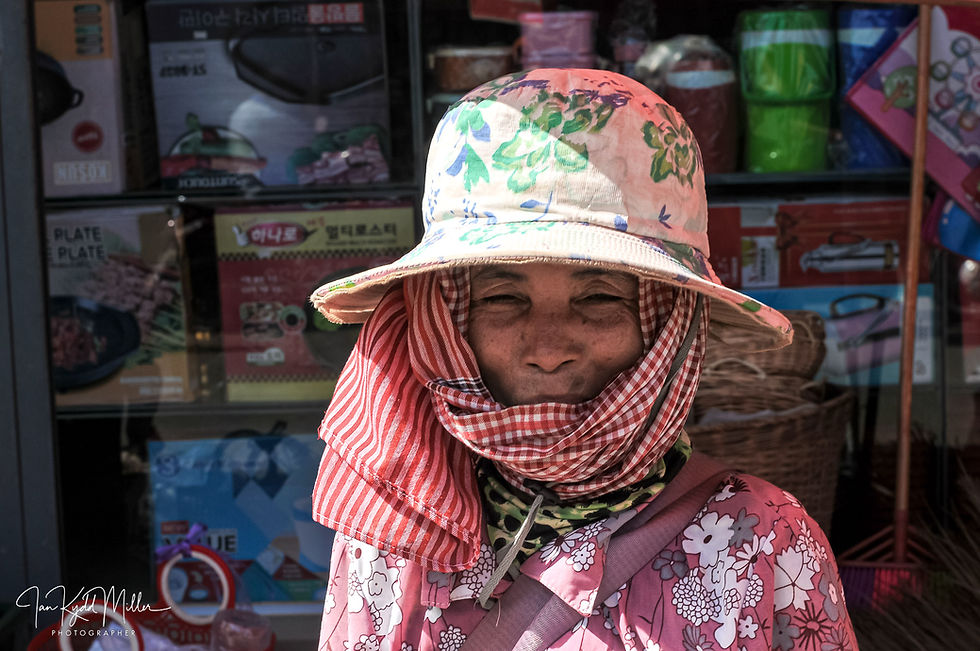Homelessnes/ Ethical considerations for Photographers.
- Ian Miller

- Sep 3
- 3 min read
Photographing people experiencing homelessness is a deeply complex act—one that sits at the intersection of ethics, advocacy, and power. The camera can illuminate injustice, but it can also exploit. Here’s a breakdown of the key issues:

🧭 Ethical Considerations
1. Consent and Dignity
Many homeless individuals are in vulnerable states. Photographing them without consent can feel invasive or dehumanizing.
Even if legally permissible in public spaces, ethical practice asks: Would I want to be photographed like this?

2. Intent vs. Impact
Is the image meant to raise awareness, or is it aestheticized suffering?
Critics warn against poverty porn—images that sensationalize hardship for likes, awards, or personal gain.
3. Stereotyping and Simplification
Media often portrays homelessness through narrow tropes: sleeping on benches, panhandling, isolation.
These images can reinforce harmful stereotypes and obscure the diversity and complexity of lived experiences.
4. Context and Storytelling
A photo without context risks reducing a person to their condition. Ethical storytelling includes background, voice, and agency.
Photojournalism tends to fare better than street photography here, as it often seeks to tell a broader, more nuanced story.
🧠 Psychological and Social Impact
Being photographed without consent can feel like a violation, especially for those already marginalized.
Some individuals may feel exposed, judged, or commodified—adding emotional strain to an already difficult life.
📸 Responsible Practice
If you choose to document homelessness, consider:
Building trust: Engage with individuals, explain your intent, and ask permission.
Collaborative storytelling: Let subjects guide how they’re represented.
Avoid voyeurism: Frame images with empathy, not spectacle.
Include context: Pair visuals with interviews, captions, or essays that humanize and inform.

Poverty porn refers to media—whether photographs, videos, or written stories—that exploits the suffering of people in poverty to evoke sympathy, guilt, or charitable action, often for the benefit of the creator or sponsoring organization. It’s a term used critically to describe content that:
Objectifies individuals by reducing them to symbols of misery or helplessness
Sensationalizes hardship to provoke emotional reactions, especially among privileged audiences
Perpetuates stereotypes about poverty as static, hopeless, and dependent on external rescue
Strips away dignity and agency, portraying people as passive victims rather than complex individuals
The term gained traction during the 1980s, when charity campaigns began using stark, emotionally charged images—like malnourished children with flies in their eyes—to drive donations. While these campaigns often succeeded financially, critics argued they oversimplified poverty and reinforced colonial narratives of saviorism2.
As Nigerian writer Chimamanda Ngozi Adichie famously said:
“The problem with stereotypes is not that they are untrue, but that they are incomplete.”
It’s not inherently wrong—but it’s ethically fraught. Using images of people in poverty to raise funds can be powerful and effective, but it walks a fine line between advocacy and exploitation. The key lies in how the image is made, why it’s used, and whose dignity it protects or compromises.
Here’s a breakdown of the core tensions:
🎯 The Power of the Image
Emotional impact: Images of suffering can galvanize support, especially when paired with urgent appeals. They often outperform text alone in fundraising campaigns.
Visibility: They can bring attention to overlooked crises and humanize statistics.
But effectiveness doesn’t equal ethical clarity.
⚖️ Ethical Dilemmas

1. Dignity vs. Pity
Images that evoke pity rather than empathy risk reducing people to passive victims. This is the hallmark of poverty porn—where suffering is aestheticized to provoke guilt or generosity.
Ethical fundraising seeks to preserve dignity, showing people as resilient, complex, and worthy of respect—not just charity.
2. Consent and Agency
Was the photo taken with informed consent? Did the subject understand how it would be used?
Without consent, even well-intentioned images can feel exploitative, especially when distributed globally.
3. Context and Representation
Does the image reflect the broader reality, or does it simplify poverty into a single, tragic moment?
Ethical campaigns often include contextual storytelling, giving voice to the subject and framing the image within a larger narrative of hope, struggle, and change3.
✅ Responsible Use: What Makes It Ethical?
Get informed consent—not just legal, but meaningful.
Avoid stereotypes—show diversity, agency, and nuance.
Pair images with context—include names, stories, and aspirations.
Use images to empower, not just to evoke guilt.
ollow ethical guidelines—many NGOs now use codes of conduct to guide image use.
Pity and guilt are powerful emotional levers. They can open wallets, spark reflection, and shift priorities. But they can also backfire—leading to performative charity, saviorism, or emotional fatigue. The real issue isn’t whether you provoke these feelings, but how and why you do it.




Comments